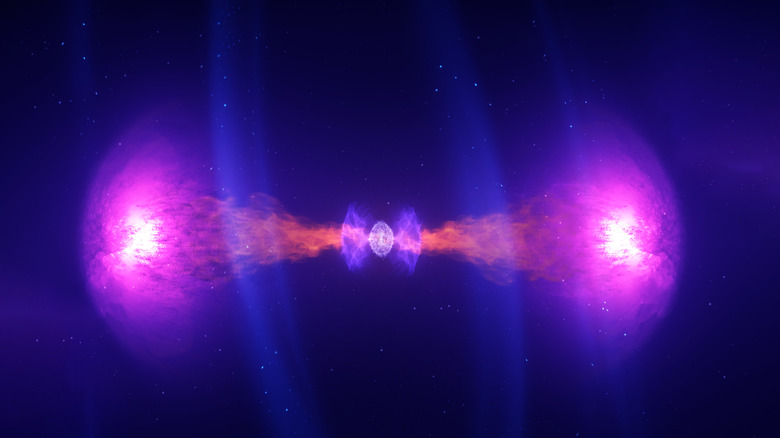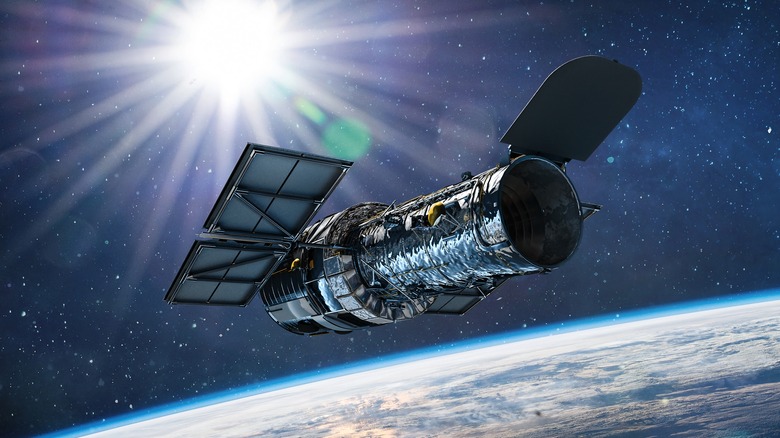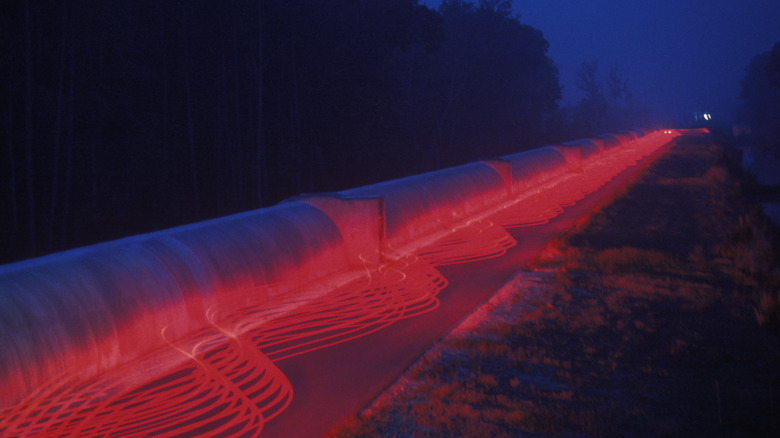The Collision Between Two Neutron Stars Shattered Our Understanding Of The Universe
In August of 2017, gravitational waves from the collision of two neutron stars that were roughly 140 million light years away coursed through our planet as they moved across the universe. Now a study recently published in Nature has shed new light on the physics of that event, which scientists have dubbed GW170817.
Scientists have apparently figured out how to use the Hubble Space Telescope to measure the superluminal motion (or bursts of energy that appear to exceed the speed of light, per MiMi) that resulted from GW170817 — which clocked in at roughly seven times the speed of light.
When researchers at the Max Planck Institute for Gravitational Physics and at the Leibniz Universität Hannover discovered both the gravitational waves and the light from that collision, it represented a watershed moment in astronomy: A new subset of the discipline was born, multi-messenger astronomy, a merger of gravitational-wave and electromagnetic measurement.
Neutron stars' collision rewrote astronomers' playbook
The energy jet's apparent superluminal motion is an optical illusion, according to Vice, but the new study, whose lead author is CalTech astrophysicist Kunal Mooley, does delve into the Lorentz factor — the factor by which length, mass and time change for an object moving at nearly the speed of light — of the jet.
"Our study represents, to our knowledge, the first proper motion constraint on the Lorentz factor of a gamma-ray burst jet indicating ultra-relativistic motion," or motion very close to the speed of light, the scientists write, per Nature. "We have demonstrated in this work that precision astrometry with space-based optical and infrared telescopes is an excellent means of measuring the proper motions of jets in neutron-star mergers ... The James Webb Space Telescope (JWST) should be able to perform astrometry much better than that with the HST, owing to the larger collecting area and smaller pixel size."
The discovery of GW170817 and the new study in Nature have upended scientists' narrative about the deaths of stars and the best way of measuring them. And multi-messenger astronomy has played a pivotal role in that rewriting of the scientific playbook.
Collision followed by flash of light, electromagnetic radiation
Neutron stars result from the explosion of much bigger stars in supernovas. They are the tiniest and densest stars mankind has yet discovered. And the collision of these two particular neutron stars led to a flash of light visible on Earth for two seconds following the gravitational waves, according to the Laser Interferometer Gravitational-Wave Observatory (LIGO).
For days and weeks after the collision, scientists picked up on electromagnetic radiation that included X-ray, ultraviolet, optical, infrared and radio waves, per LIGO. They also found the signatures of new material such as gold and platinum, answering the previously-unresolved question of how elements heavier than iron come to be.
All told, GW170817 was an illuminating event for astronomers, and as the new study in Nature shows, the discoveries that flowed from it just keep coming. No doubt in future years scientists across the world will collaborate to understand superluminal motion in even more detail.


